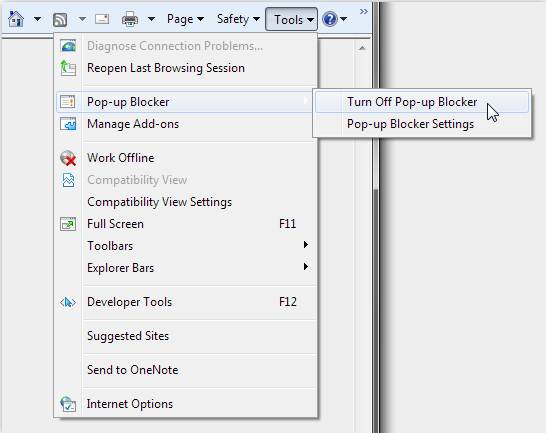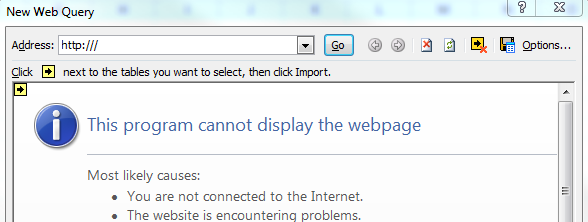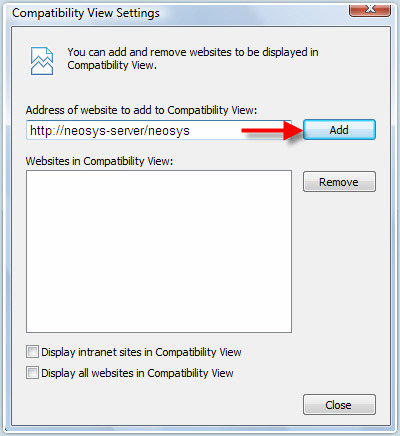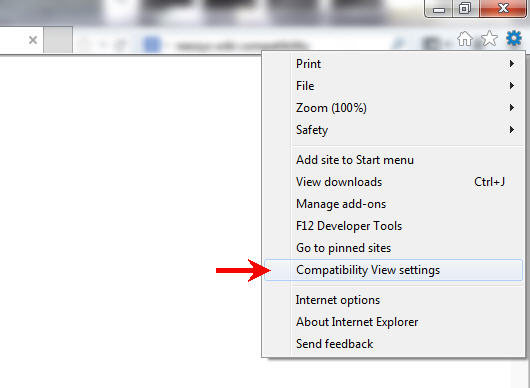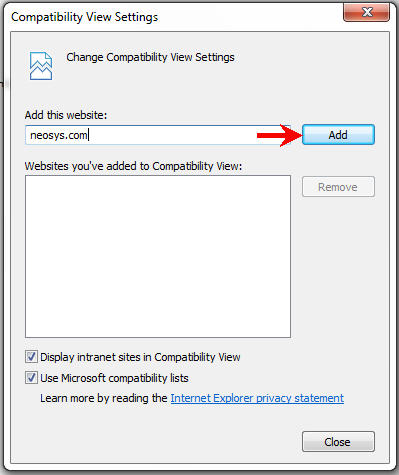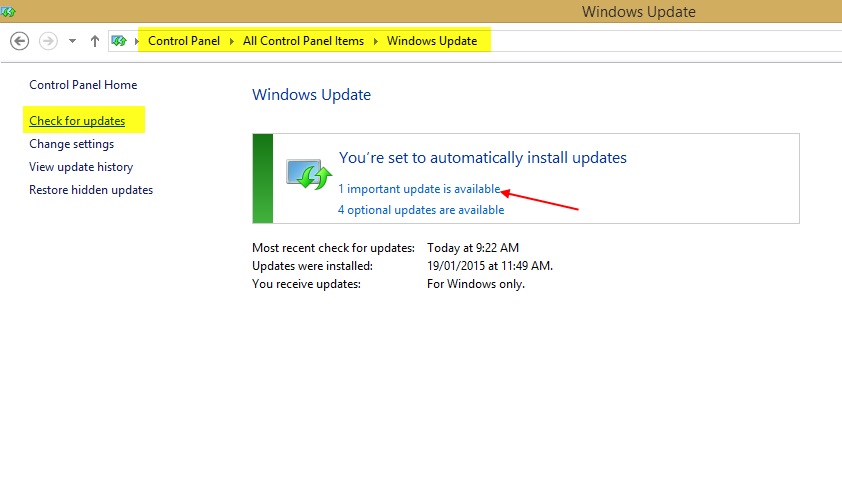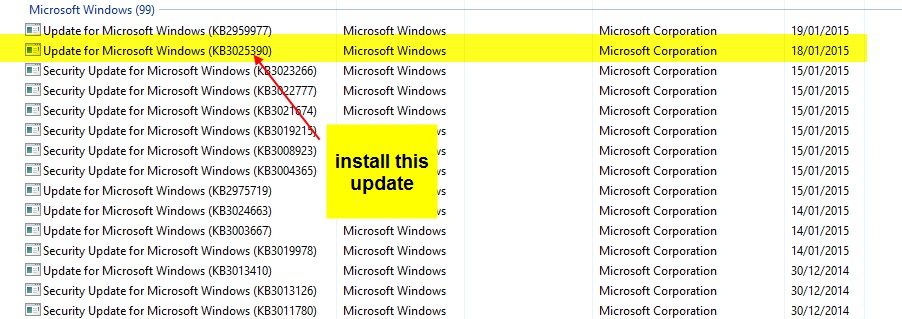Setting up and Configuring NEOSYS Generally
Configuring letterhead
Configuring Client Security mark
A "client security mark" which represents the client's general public identity or trading name is printed on all documents generated out of NEOSYS. This client mark is a mandatory contractual feature and cannot be removed.
The client security mark can only be set or changed by NEOSYS technical support staff during implementation and in case the client's public identity changes at a later date.
The objective of the client mark is that anyone can easily identify the general source of a document or report out of NEOSYS. It therefore MUST clearly indicate the public identity of client and CANNOT be brief or anonymous.
The client mark must be something simple like a brand word or phrase that is common to all companies in a client installation. It should NOT be the precise legal name of the company because that is not required to achieve the objective and requires more maintenance
Any new companies added later on will use the same mark SO KEEP IT SIMPLE.
The corporate group name and possibly geographical location is a good concept to follow for example:
Adline Kuwait
In addition to the above initial general default client mark per database, in case certain companies within the same NEOSYS database cannot use the same mark at all, for example due to different branding, additional client security marks can be assigned to specific companies. This will not be allowed where a simpler client mark could cater for all companies.
Configuring fonts and colors for all users
The default font and color for all users is set up in the System Configuration File.
It can also be set up per department by setting the same on the department user record in the User Details page.
Users can override the above colors and fonts in their User Details page after login.
Changing the signatory
In Maintenance mode, press F5 and the following command:
ED DEFINITIONS AGENCY.PARAMS
Be careful not to insert lines except at the end. Moving other lines down will totally screw NEOSYS!
Then go to the bottom of the page (Ctrl+Page down). Once you reach at the bottom, ENTER enough times to add additional lines if required, then search for line 61 (Ctrl+G) and edit the document / add this code:
<br><br><br>Name of General Manager<br>General Manager<br>
Configuring backup procedures
See the System Configuration File on the NEOSYS Support Menu.
Note that this configuration file is missing the option to email a NEOSYS backup.zip file daily after the backup has been completed. To configure this go to the Maintenance mode and hit the F5 key and type:
ED DOS BACKUP.CFG
In line number 10, set the email address of the recipient/s who should receive a backup.zip file. This method is extremely useful as an offsite backup procedure in case of any server or USB failures.
Configuring automated emails in NEOSYS
See the System Configuration File on the NEOSYS Support Menu.
The default configuration will send email via mailout.neosys.com on port 2500.
Note that neosys mail server will accept email from anywhere as long as the sender email is @neosys.com
Authorising Users
Preventing users from assigning their own passwords
The task AUTHORISATION INVENT OWN PASSWORDS should always have the lock NEOSYS to prevent users from creating their own passwords. Most users create unsafe passwords given the choice.
People nearly always ask to give their own passwords but you should tell them that NEOSYS always assigns random passwords for security reasons. It is not worth arguing and discussing the point with most people since they don't usually grasp the importance and soon learn their NEOSYS password anyway.
NEOSYS support staff who login as NEOSYS are still authorised to create their own passwords but it is better not to leak this information to clients immediately since people will grasp on to it and be disappointed or even offended that you are not granting this privilege to them.
Unfortunately there is no general way for people to change their own passwords at the moment. Only the few people who have access to the Support Menu and Authorisation File can do it. Changing your own passwords should be on the NEOSYS Help menu so everybody can do it.
Authorising access from outside the LAN
From 15/2/2008 access to NEOSYS is by default restricted to users from the standard local area network ip numbers starting 192.168, 10 and 127 so you might get clients complaining that they cannot login.
In order to allow access from outside you will have to update the Authorisation File and put a list of valid ip numbers that they are authorised to login from.
You dont have to put ip numbers on every single user. If the user ip numbers are blank for a user then the system will look for and use the nearest ip numbers on the following users below within the same department. Therefore you only have to put the ip numbers on the bottom "department user".
Examples
To allow someone to login from a) anywhere in the office and b) from another office with a static ip number of say 80.11.22.33 put something like 192.168.*,10.*,127.*,80.11.22.33
To allow someone to login from anywhere put * This is not recommended but necessary if someone absolutely has to login from anywhere in the world.
Authorising users to access from dynamic IP when previously only authorized to access from known static IP
In situations when users who are authorised to access from known static IP till date but now have access to dynamic IPs only , Support must get permission from management before configuring NEOSYS to allow them access from any IP and informing them the risks of allowing users access from any IP.
Support must not agree to do serial work of adding the IP to list of allowed IPs in NEOSYS each time the client gets an IP from the ISP.
Sample Email:
Dear XXX, We need your agreement to allow XXXX users to access NEOSYS from any location/IP address. Until now XXXX users were restricted to office/authorised location only but your IT team is no longer able to provide a static IP. Users will get frustrated when they are unable to log in and will lose valuable time because NEOSYS cannot grant users permission to access from arbitrary dynamic IPs given by the ISP each time. Your IT person should provide us with the fixed static address urgently as it is not recommended to enable access from any IP due to risks like access of data by unauthorised persons , malicious hacking attempts etc. Please confirm that you understand the risks and permit authorization of access from any IP temporarily and agree to provide our Support Team with a static IP urgently.
Enabling Minimal Access to Certificate File for Monitoring Department Staff
Giving users access to the Support Menu
The Support Menu in NEOSYS enables users to access the following:
- List of Database processes
- List of Documents in use
- Stop/Restart NEOSYS service
- Backup
- Log
- Authorisation file
This menu is locked with the task SUPPORT MENU ACCESS and has the LS key. To give any user/I.T. administrator access to this menu, you have to give him the LS key.
Configuring Payment instructions
Support should strictly economise on number of lines used for payment instruction to avoid more lines taking up more space on the printout. This is because sometimes more lines could cause the printout to creep into two pages instead of one.
NEOSYS picks up the first available payment instructions from the following locations and ignores any instructions in the later files.
- Client file
- Company file with currency code
- Currency file
- Company file with currency code left blank
- Configuration File
Following the above rules if payment instructions are absent in all files, then no payment instruction is displayed.
Leave the currency code field blank in Company file to configure payment instructions for all currencies without having to tediously enter it in the Currency file for each currency.
There is a manually edited flag in the company file on one NEOSYS client which makes the company file payment instructions take precedence over any currency file payment instructions. This may be added to the Client File user interface as "For all currencies"
The usual way of configuring payment instructions is to put it in the Company file under Finance. This configuration allows different payment instructions per currency. If you put the payment instructions in the currency file, then these instructions apply to all companies, unless the manual flag in the company record is manually edited in the maintenance mode by NEOSYS programmers to say that the company file instructions take precedence.
Tip: Since the rules of getting payment instruction are not simple, if you are *changing* payment instructions, locate where the old instructions are and simply change them without worrying about the rules.
Specifying Payment Terms on Invoices
Different payment terms can be concurrently specified at various levels. Any payment terms specified at a more detailed level take precedence over payment terms specified at a more general level
In order of preference, when creating an invoice or estimate/quotation, payment terms are looked up in the following order. The first payment terms found are used.
- New Invoices screen - per invoice
- Chart of Accounts if not suppressed in configuration file
- Client File - per client
- Company File - per company
- Configuration File - per database
Entering a full stop (.) or the word NONE in Client or Company File payment terms suppresses any terms found in Company or Configuration File allowing you to suppress, per client or company, any default payment terms specified in the Company or Configuration Files.
Creating Email Alerts in NEOSYS
Currently this is a manual process done in maintenance mode using F5. It will be replaced by a web interface.
See Configuring Media Module Email Alerts
To find existing alerts
SORT DOCUMENTS ALERTS
Syntax
CREATEALERT alertid module alerttype runhours,... runasusercode {targetusercode,...} testemail} (options)
The command must be followed by five parameters in a fixed order and separated by spaces. Two additional parameters and options in "()" may follow in a fixed order. To replace an existing alert use the overwrite option.
Alertid
Required. Invent some short identifying alphanumeric code for your alert e.g. XYZ001. It will show in the email subject and is required if you want to change or remove the alert.
Module
Required. One of the following.
- GENERAL
- FINANCE
- AGENCY
- MEDIA
- JOB
Alerttype
Required. Various alert types are available depending on the module.
See Alert Types
Runhours
Required. For example, 10 to run at 10am or 10,13,17 to run at 10am, 1pm and 5pm.
Runasuser
Required. Determines the authorisation level during processing
Targetuser(s)
Optional commas separated list of user codes (no spaces!) to receive any output from the alert. Note that some s may not have any output and that some alerts may automatically direct their output to various users.
Test email
Optional. An email address or addresses separated by ;. All emails generated by the process will be redirected here regardless of who they are normally directed at.
Options
Optional. One or more of the following letters must be in "()"
- R=Remove - remove an existing alert (only the alertid parameter is required)
- O=Overwrite - required to overwrite an existing document.
- S=Silent
- ROS=forget last run time
Alert emails to some executives are being received by their managers
You can put whatever you like in the executive name but NEOSYS must be able to find their email somehow.
For example if the executive is entered as “Steve Bush” and there is no user called Steve Bush in the Authorisation File.
1. Does the executive name contains an “@” character? then it is the email address 2. Is there a user in Authorisation matching either the executive name (Steve Bush) … or the first word of the executive name (Steve)? 3. If none of the above then the email of the user running (usually a manager) the process is used
To solve this problem create users matching the executive names.
Note that creating users with email addresses enables them to login to NEOSYS by requesting password reminders to their email address so like all users you must ensure that their authorisation level is appropriately limited.
Configuring Internet Explorer
Disabling the pop-up blocker
- Open Internet Explorer
- Click the Tools menu
- Click Pop-up Blocker
- Click Turn off Pop-up Blocker (If already off, it will show an option to Turn on Pop-up Blocker)
- Confirm by clicking the Yes button.
IE 9 Alternative
- Open up Internet Explorer
- Open the NEOSYS login page
- Enter your username, password & click on login
- You should see a yellow bar appear at the bottom of Internet Explorer window
- Click on Options for this Site and then click on Always Allow (See image below)
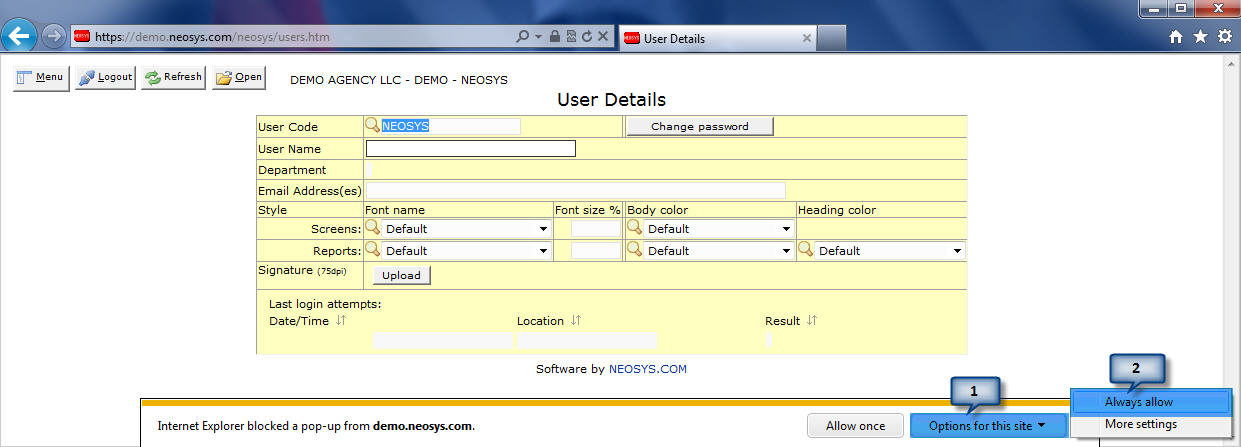
Adding NEOSYS to Trusted Sites
- Go to Tools menu (press Alt+T)-> Internet Options
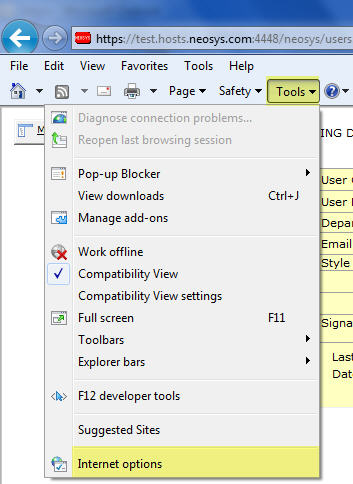
- Click on Security
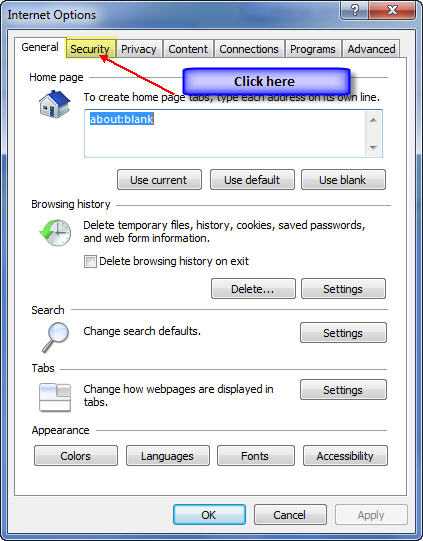
- Click on Trusted Sites and Sites
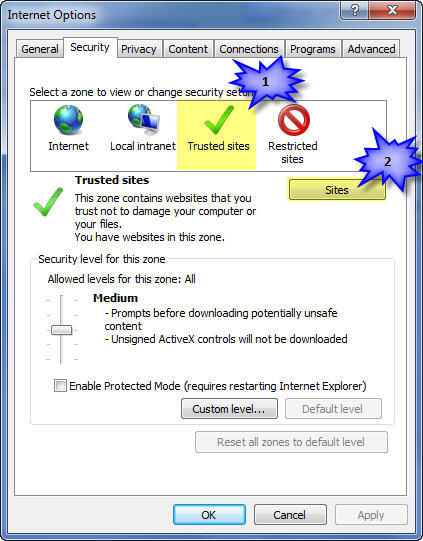
- Click on Add
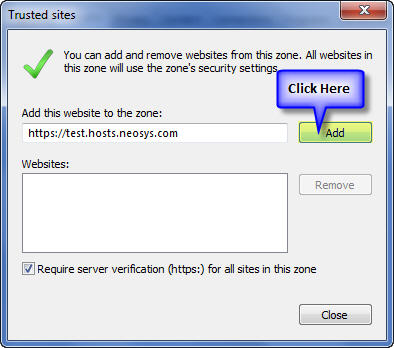
- Click on Close
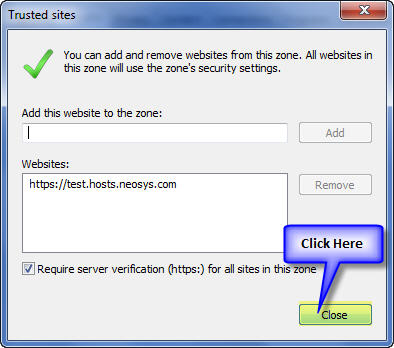
- Done
Fixing HTTPS certificate error when logging in from an external link using IE8, IE9 and IE10
NEOSYS provides an external link to login to the program to function when staff are outside the office. This address is different from an internal address (eg. an internal address when accessing NEOSYS from within the office may be http://192.168.1.100/neosys, however an external link from which you access NEOSYS from outside the office maybe https://clientname.redirectme.net:4430/neosys). As this is a secure 128 bit encrypted method to protect your data from prying eyes on the internet, this method involves the creation of self signed certificates.
The error message would be something like this on IE8 and IE9 browsers:
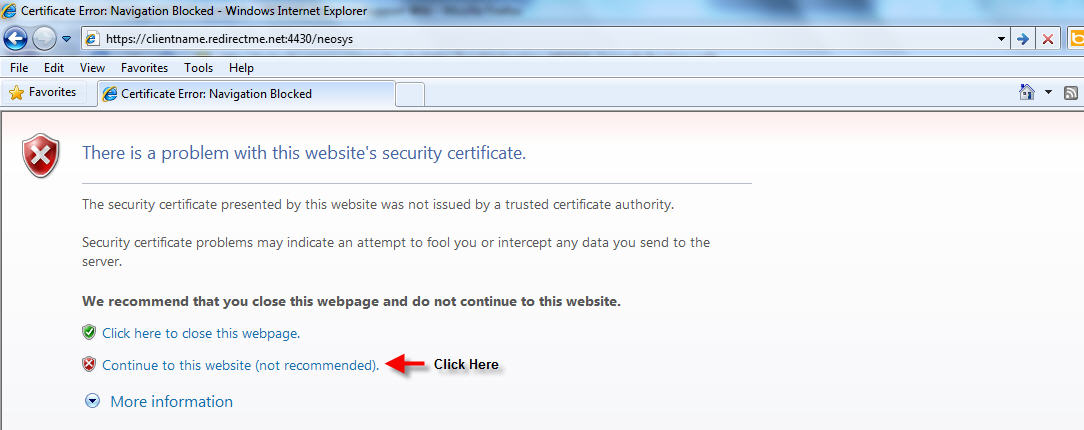
As the message states, Internet Explorer does not recognise the issuing authority which is NEOSYS SOFTWARE and hence warns the user. The solution to remove this message is documented at the link below: Installing NEOSYS certificate
Enabling Menu Bar
If you cannot see the Menu Bar ( File , Edit, View etc), configure internet explorer as follows:
- Right Click on the Internet Explorer Window and Select the "Menu Bar" option

- The Menu Bar will now be displayed at all times

Enabling Status Bar
NEOSYS uses the Internet Explorer status bar (the bottom line of the Internet Explorer window) to inform you when it is communicating with the server. This is particularly useful when you are working over the internet and/or with large documents since it gives you some feedback of how the system is working.
Unfortunately, when the NEOSYS server is not on your office LAN, NEOSYS cannot update the status bar unless you configure Internet Explorer as follows:
- Click on View menu, select Toolbars, and tick “Status bar” ( In case view menu is not displayed then see procedure mentioned at Enabling Menu Bar to enable it)
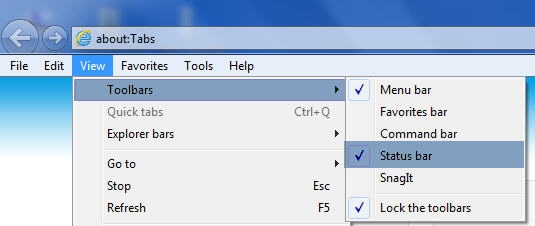
- Add NEOSYS to the trusted sites (See Add NEOSYS To Trusted Sites)
- The status bar will be displayed at the bottom.
Enabling Command Bar
- Click on View menu, select Toolbars, and tick “Command bar” ( In case view menu is not displayed then see procedure mentioned at Enabling Menu Bar to enable it)
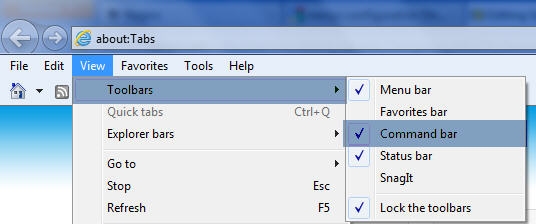
- The command bar will be displayed at all times now

Enabling the Edit button in Internet Explorer
To enable the Edit button in the Command Bar, do the following:
- Open Internet Explorer
- Right Click on the Command Bar and Select Customize > Add or Remove Commands.
Note - If you cannot see the Command Bar then click on Enabling Command Bar to learn how to view it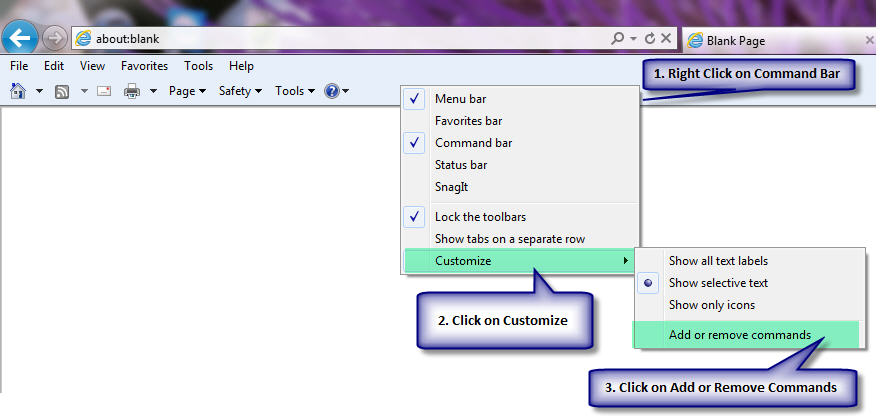
- From the Available Toolbar Buttons on the left hand side Select EDIT, Click on Add and Click on Close
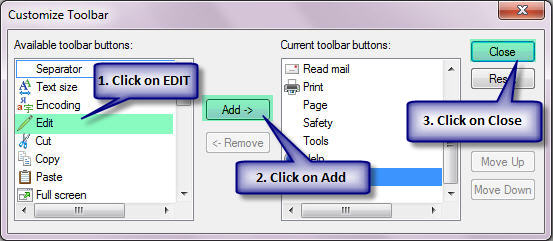
The EDIT Button shows up in your Command Bar. - You can now open the NEOSYS report in excel by Clicking on the Edit Button and Select Edit with Microsoft Office Excel.
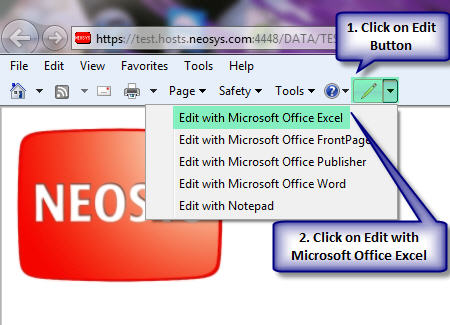
Fixing ‘Export to Microsoft Excel’ from IE9 not showing URL in Excel web query dialogue
Internet Explorer 9 provides additional security that limits the functionality of the ‘Export to Microsoft Excel’ option within an Internet Explorer web page. This was a security design improvement to Internet Explorer 9. This issue is fixed in Excel 2013.
Steps to reproduce the issue:
- so right click and on the IE9 icon, and click Run as Administrator as shown above
- Open any web page, for example: http://www.msn.com
- Right click into the page and choose "Export to Microsoft Excel"
- Excel will open and a window "new web query"
- In the address bar you will see "http:///" and the internet site will not be shown and an error is returned.
The error displayed is:
Solution
Copy and paste the URL from IE9 in to the Excel web query dialog where http:/// is located.
If option to ‘Export to Microsoft Excel’ is not available upon right clicking then do the following:
CAUTION: This fix requires administrator rights, so make sure you are logged in as administrator or run regedit as Administrator. This article contains information about how to modify the registry. Make sure that you back up the registry before you modify it. Make sure that you know how to restore the registry if a problem occurs.
- Start > Open > Regedit and run as administrator
- Browse to: HKEY_Current_User\Software\Microsoft\Internet Explorer\MenuExt
- Right click on MenuExt > New > Key: Export to Microsoft Excel
- Right click on the ‘Default’ string value > Modify > Value Data: res://C:\Program Files\Microsoft Office\Office14\EXCEL.EXE/3000
Where drive is the letter of the drive where Excel is installed and where path is the complete path of the Excel.exe file.
Enabling compatibility view in IE8, IE9 and IE10
NEOSYS version 19/11/13 eliminates the need for Compatibility mode. Users who upgrade to Internet Explorer 8 (IE8), IE9 or IE10 might complain that they do not have access to NEOSYS it mostly means when the NEOSYS homepage is opened up, they would get a message that "You Need Internet Explorer 5.5 and or greater" or some other undocumented error. However, the most common message looks like this:
The quick fix for this is to click on the Compatibility Mode on IE8 or IE9 or IE10 as follows:
Another way is to add the NEOSYS URL to the Compatibility View Settings under Tools:
Enabling Compatibility view in IE11
Click the gear shaped icon on the top right corner of the IE11 window and click on compatibility view settings. Click on Add to add neosys.com to list of websites added to compatibility view.
Fixing issues in IE caused by Windows Update KB3008923
KB3008923 is a problematic update from Microsoft Windows for Internet Explorer which causes issues in NEOSYS. Microsoft has released a fix for it. Please follow the instructions below to install the fix.
Check for Updates under Control Panel> All Control Panel Items > Windows Update
Install KB3025390
Restore IE browser settings before working on NEOSYS

